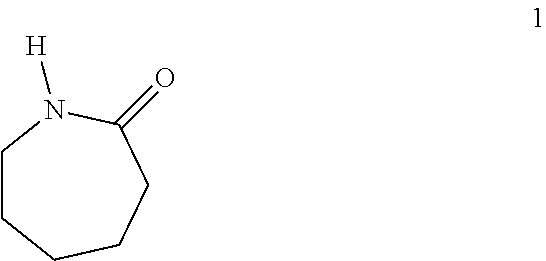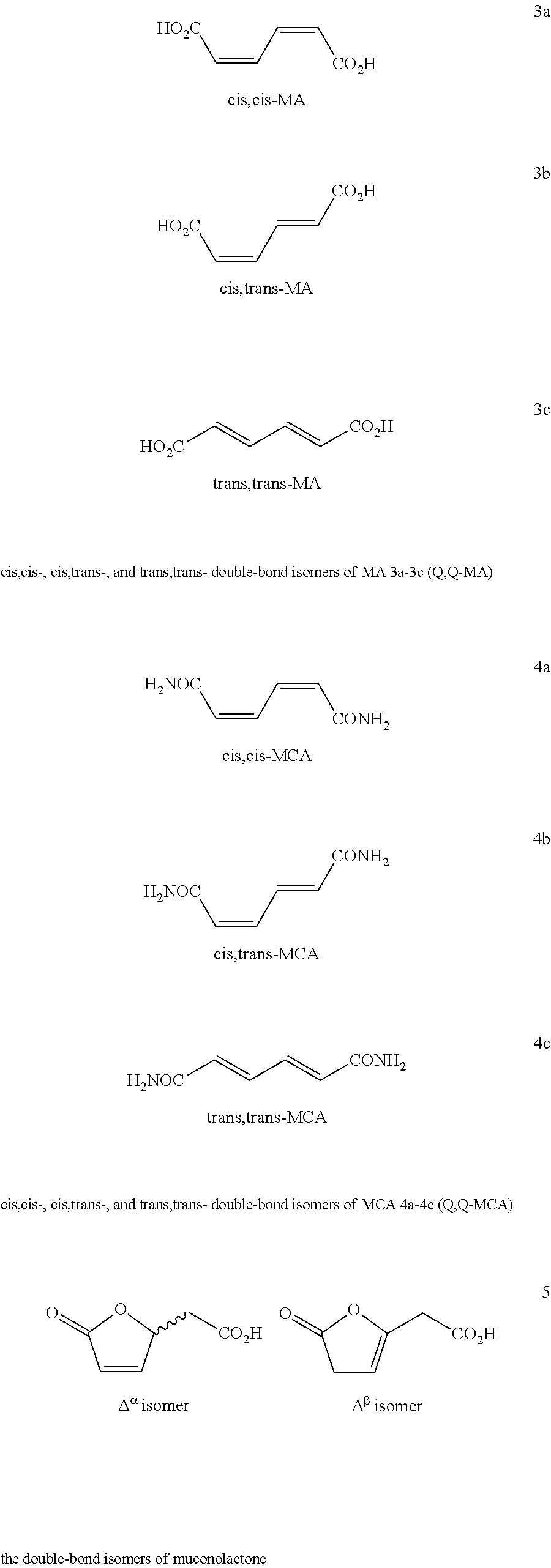Process for Preparing Caprolactam and Polyamides Therefrom
a technology of caprolactam and polyamide, which is applied in the preparation of amino compounds, carboxylic acid amides, organic chemistry, etc., can solve the problems of large amounts of ammonium sulfate, high cost of hydrogen peroxide, and difficulty in obtaining low-cost power, so as to reduce the dependence of mankind on crude oil, increase the use, and reduce the effect of air and water pollution
- Summary
- Abstract
- Description
- Claims
- Application Information
AI Technical Summary
Benefits of technology
Problems solved by technology
Method used
Image
Examples
examples
[0115]This invention will be further clarified by a consideration of the following examples, which are intended to be purely exemplary of the present invention. Those of ordinary skill in the art will readily recognize a variety of non-critical parameters that could be changed or modified to yield essentially similar results.
Materials and Methods
[0116]Solvents were used as commercially supplied unless otherwise noted.
[0117]Tetrahydrofuran (THF) was dried by distillation in the presence of sodium and benzophenone under a nitrogen atmosphere.
[0118]Muconic acid double-bond isomers (Q,Q-MA 3a-3c) were obtained from a fermentation process using sugar from renewable biomass feedstock as described in detail below.
[0119]Solvents were removed under reduced pressure by rotary evaporation, and residual solvent was removed by vacuum pump at less than 2 mmHg.
[0120]Analytical thin-layer chromatography (TLC) was performed on E. Merck precoated TLC plates (silica gel 60 F-254, layer thickness 0.2 m...
example a
Isomerization of cis,cis-Muconic Acid [cis,cis-Ma 3a] to cis,trans-Muconic Acid [cis,trans-MA 3b] in Water
[0146]
[0147]cis,cis-MA 3a (265 g) produced by fermentation of sugars derived from renewable biomass was suspended in water (2 L) and the pH of the solution was adjusted to 5.1 with 10 M of NaOH (250 mL). The mixture was heated at 90° C. for 2 hr. Samples were taken at T=0 min; T=60 min; and T=120 min and analyzed by HPLC. After 2 hr of heating at 90° C., the reaction mixture was treated with charcoal (20 g) for 30 min and the hot solution was filtered through a thin bed of filter aid. The solution was adjusted to pH 2 with concentrated sulfuric acid (50 mL) and allowed to cool to 0° C. in an ice-bath. The precipitate cis,trans-muconic acid was obtained by filtration and dried under reduced pressure to yield 71 g of cis,trans-MA 3b as light yellow solid. The filtrate was concentrated to 600 mL and allowed to incubate overnight at 0° C. The precipitated was filtered and dried to y...
example b
Isomerization of cis,trans-Muconic Acid [cis,trans-MA 3b] to trans,trans-Muconic Acid [trans,trans-MA 3c] in Tetrahydrofuran (THF)
[0150]
[0151]cis,trans-MA 3b (19 g, 133.8 mmol) was dissolved in THF (250 mL) at RT and a crystal of iodine (160 mg, 0.63 mmol) was added. The reaction mixture was heated at reflux for 4 hr and the precipitate was filtered, washed with acetonitrile and dried under reduced pressure to yield 16 g of trans,trans-MA 3c, (84% yield) whose 1H and 13C NMR data are:
[0152]1H-NMR (300 MHz, DMSO-d6) δ 12.59 (s, 2H), 7.28 (dd, J=6.9, 1.8 Hz, 2H), 6.30 (dd, J=6.9, 1.8 Hz, 2H); and
[0153]13C-NMR (75 MHz, DMSO-d6): δ 166.8, 140.8, 129.1.
PUM
| Property | Measurement | Unit |
|---|---|---|
| Temperature | aaaaa | aaaaa |
| Fraction | aaaaa | aaaaa |
| Time | aaaaa | aaaaa |
Abstract
Description
Claims
Application Information
 Login to View More
Login to View More - R&D
- Intellectual Property
- Life Sciences
- Materials
- Tech Scout
- Unparalleled Data Quality
- Higher Quality Content
- 60% Fewer Hallucinations
Browse by: Latest US Patents, China's latest patents, Technical Efficacy Thesaurus, Application Domain, Technology Topic, Popular Technical Reports.
© 2025 PatSnap. All rights reserved.Legal|Privacy policy|Modern Slavery Act Transparency Statement|Sitemap|About US| Contact US: help@patsnap.com



